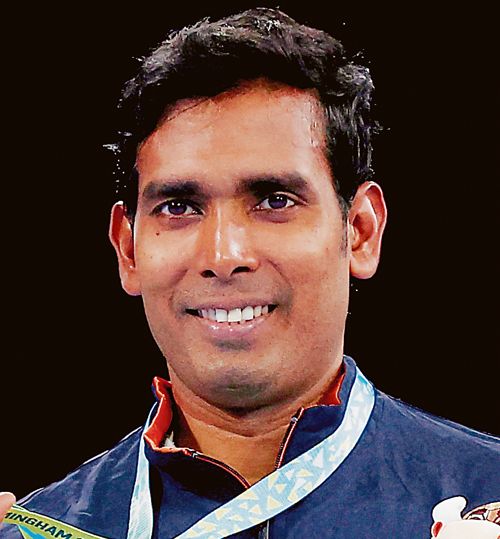[ad_1]
Sharath Kamal Achanta
ONE question is repeatedly thrown at me, for which I am trying to find an answer myself: What motivates me to keep going after a long career, at age 40? To get up every day, try to improve technically in the table tennis hall, push myself beyond my own limits at the gym, follow a strict regimen through the day, eating right or getting rest/sleep for the required number of hours?
I have been doing all this for the last 30-odd years, all the while relishing the process and staying in a state of bliss through the highs and the lows. Sixteen years ago, when I won the first gold medal for India in table tennis in the Commonwealth Games, at Melbourne 2006, I shot to glory, as did the sport of table tennis, but it took nearly 12 years from then for Indian table tennis to mark its emergence at the world stage.
In 2018, when Team India won eight medals at the Gold Coast Commonwealth Games, people did notice the robust growth of Indian table tennis. And over the last two years, first with my Tokyo Olympics campaign and then my conquest of the 2022 Birmingham Commonwealth Games — with three gold and one silver medal — it has almost become a legendary story that has set high standards for India’s table tennis fraternity.
Being chosen for the Major Dhyan Chand Khel Ratna Award for my performance over the last four years has been a shot in the arm, the best part being that there is no one else sharing this award this year. I’m happy that other sportspersons, sports administrators, sports journalists and anyone following sport adjudged that Sharath Kamal Achanta was the right pick for the Khel Ratna 2022.
But all this did not happen overnight. The preparation for the Birmingham CWG started in November 2021, nine months in advance. My team consists of my table tennis coach, fitness coach, mental coach and nutritionist. They all planned systematically how the training process would be structured and we followed it almost to a T.
The workload management was supervised with skill, strength, endurance, agility, reflexes, rest, recovery and nutrition. I learnt a lot from my past experiences and clearly knew what it would take for me to peak both physically and mentally at the right time. The most important thing on my mind was how to stay fit and focussed through the whole 13 days of competition, with over 20 matches in four different events. And that was what everyone was able to see on the court — a supremely fit Sharath Kamal with the best possible mindset and a great body language.
Moving on from myself to Indian TT, since 2016, there has been a steady growth in the profile of the sport in India. That year, four of our paddlers had qualified for the Olympics – two men and two women, the highest ever from India. That was followed by a brilliant performance at the 2018 Asian Games. We got two bronze medals, the first time ever India had podium finishes at the Asian Games. I went on to win the Oman Open in 2020. And then came my personal best at the 2022 Commonwealth Games in Birmingham, with three gold and one silver.
Indian paddlers have come a long way from being ranked around 33 in the world team rankings in 2003 to breaking into the top-8 a few years ago. Our performance has been steadily improving, given our limitations in infrastructure. We don’t have huge stadiums with 40 tables across the playing area, and training areas where the balls travel really slowly but still have a steady bounce.
During my first international tournament, I was intimidated by the sheer size of the halls and number of tables at the training courts and the match area. I probably lost the match in my head even before the tournament began.
Back then, breaking into the top-100 was a huge deal, for very few people from India had done that, and it became my goal. When my European colleagues said I had the potential to make it into the top-30 in the world, I found it very hard to believe, because I hadn’t seen the journey of anybody who had achieved that and I didn’t know the path to get there. There was no proper system to guide or help us.
But slowly and steadily, the scenario has been improving. We had many international coaches coming in with a proper structure, system and routine for our practice sessions. The table tennis federation has worked with the Sports Authority of India and found quality coaches like Massimo Constantino, Hubert Hustache and others. Every time we’ve had a long stint with a foreign coach staying in India, all of us improved significantly and performed well at the world level.
There was a time when I was the only one in the top-50 from India, but now we have five Indians, including the women, in the top-100 and three in the top-50. Indian table tennis now has a strong presence in the international scene and I am sure, with the kind of talent our juniors have, and given the right structure and guidance, India will become a force to reckon with.
[ad_2]
Source link



